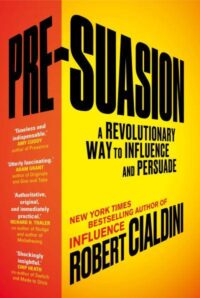Reading Notes for:


THE THREATENING
Dread risks , which involve risky steps that people take to avoid harm from something that is actually less risky but that they happen to be focused on at the time and have thereby come to dread.
After the terrorizing events of September 11, 2001, Many thousands of Americans with long-distance travel plans abandoned the dreaded skies for the roads. But the fatality rate for highway travel is considerably higher than for air travel, making that choice the more deadly one. It’s estimated that about 1,600 Americans lost their lives in additional auto accidents as a direct result, six times more than the number of passengers killed in the only US commercial plane crash that next year.
Most of the data on the effectiveness of such information come from the messages of communicators trying to steer us away from unhealthy lifestyle choices. As a rule, communications that present the most frightening consequences of poor health habits work better than milder messages or messages that present the positive consequences of good habits. Plus, the more prominent and attention grabbing the fearsome appeals are, the better they work. In over a dozen countries, placing large, scary images and warnings on cigarette packages has had the double-barreled effect of convincing more nonsmokers to resist and more smokers to stop the practice.
What’s the persuasive alchemy that allows a communicator to trouble recipients deeply about the negative outcomes of their bad habits without pushing them to deny the problem in an attempt to control their now-heightened fears? The communicator has only to add to the chilling message clear information about legitimate, available steps the recipients can take to change their health-threatening habits. In this way, the fright can be dealt with not through self-delusional baloney that deters positive action but through genuine change opportunities that mobilize such action.
A Dutch team redirected the behaviors of individuals who, after undergoing tests, were informed of their especially high vulnerability to hypoglycemia (a blood glucose disorder also known as chronic low blood sugar) and of its sometimes severe consequences such as organ failure, convulsions, and depression. Paired with this alarming news, the recipients got information about a workshop they could attend to improve their diets and, hence, their chances of avoiding the disease. Most of them sought out further information about the diet workshop and, compared with similar health status individuals who received a less fear-inducing message, were four times more likely to sign up for the workshop then and there. That was because they believed the workshop would have a favorable impact on their health, and they used that new belief, rather than denial, to manage their anxieties.
One member of our research team, Urged us to take an evolutionary perspective, we realized that humans encountering threatening circumstances would have developed early on a strong tendency to be part of a group (where there is safety and strength in numbers) and to avoid being separate (where there is vulnerability to a predator or enemy). The opposite would be true, however, in a situation with sexual possibilities. There a person would want distance from the pack in order to be the prime recipient of romantic consideration.
We also realized that these two contrary motivations, to fit in and to stand out, map perfectly onto a pair of longtime favorite commercial appeals. One, of the “Don’t be left out” variety, urges us to join the many. The other, of the “Be one of the few” sort, urges us to step away from the many. So, which would an advertiser be better advised to launch into the minds of prospects? Our analysis made us think that the popularity-based message would be the right one in any situation where audience members had been exposed to frightening stimuli—perhaps in the middle of watching a violent film on TV—because threat-focused people want to join the crowd. But sending that message in an ad to an audience watching a romantic film on TV would be a mistake, because amorously focused people want to step away from the crowd.
The results stunned me. An advertisement we created stressing the popularity of San Francisco’s Museum of Modern Art (“Visited by over a million people each year”) supercharged favorability toward the museum among people who had been watching a violent movie at the time; yet among those who’d been watching a romantic movie, the identical ad deflated attraction to the museum. But a slightly altered ad—formulated to emphasize the distinctiveness rather than the popularity of museum attendance (“Stand out from the crowd”)—had the opposite effect. The distinctiveness ad was exceedingly successful among individuals who’d been watching the romantic film, and it was particularly unsuccessful among those who’d been viewing the violent one.
Put people in a wary state of mind via that opener, and, driven by a desire for safety, a popularity-based appeal will soar, whereas a distinctiveness-based appeal will sink. But use it to put people in an amorous state of mind, and, driven by a consequent desire to stand out, the reverse will occur.
I’d bet, for instance, that if Ford media buyers plan to purchase TV slots for ads trumpeting the Ford F-150 pickup as “America’s largest-selling truck for thirty-nine years” (as some ads do), they never consider favoring placements during crime dramas, scary movies, and news programming, while shunning romantic comedies and love stories.
